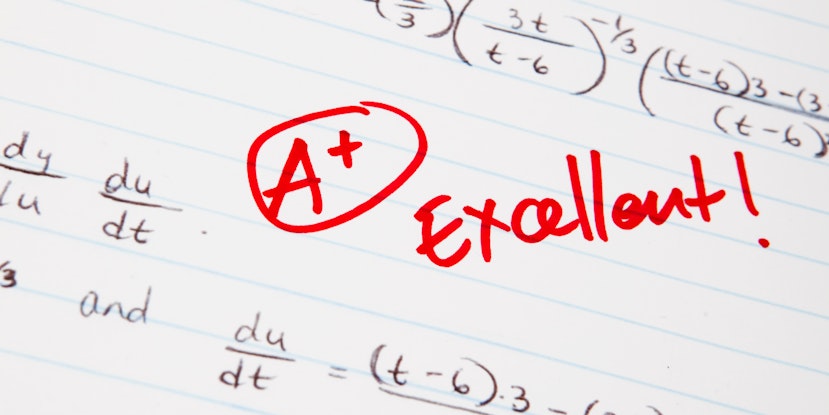MAP Test Scores: Understanding of MAP Score
Updated November 6, 2024
Schools are constantly scoring students for their work and setting benchmarks on where they should be depending on their age and peers.
Results are compared between the schools and country and pupils can feel overwhelmed if they do not meet the “average” map test scores.
However the MAP growth test scores measure a pupil’s personal academic growth and the scores are displayed in a very accessible format for both student and teacher to understand.
These scores are not used to compare between pupils or put towards a grade. They are unique in just measuring personal potential.
This article explains how the MAP testing scores work, with a guide on how to understand them and other important details.
What Are NWEA MAP Scores?
MAP scores are designed and created by NWEA, who use the Rasch unIT Scale to find the overall score for each student.
This scale measures the score based on the individual’s previous scores, ultimately showing their progress in learning and their achievement level at different times of their school education.
They are a good indicator to show the improvement of a student, in addition to areas that need work on.
MAP scores are recorded either once per school year or every semester and displayed in a chart so that both parent and pupil can keep track of the journey.
Kindergarten and first grade pupils do not take the MAP test.
NWEA Map Practice with TestPrepOnline
How Are MAP Scores Calculated?
Score levels are given their value once they are tested on thousands of students in the country and then the individual is given their final score once they have completed the test.
The result level remains consistent regardless of a pupil’s performance and if they score high or low.
The level of the score is not graded and is not important, it is about measuring the individual academic progression.
Students are encouraged to put something down for every question on the MAP test and there is no penalty for incorrect answers.
Map Test Scores Chart
The chart below is an example of what a student’s MAP scores may look like over their school years.
One thing to note about the MAP scores chart is that the scores start from the lowest at the bottom of the table to the highest scores at the top.
| Year | Grade | RIT Score | Percentile Range |
| Fall 2020 | 5 | 205 | 62% |
| Spr 2019 | 4 | 200 | 48% |
| Win 2019 | 4 | 199 | 57% |
| Fall 2018 | 4 | 189 | 53% |
| Spr 2018 | 3 | 184 | 49% |
| Win 2018 | 3 | 182 | 50% |
| Fall 2017 | 3 | 180 | 47% |
The percentile range is the percentage of peers that your child has outperformed in the test.
These scores are not graded and the percentile range is just to give some context to parents and guardians on how well the child is performing for their year group.
Where Can You See MAP Testing Scores?
The scores are available straight after the test, but parents are commonly then given a progress report, which shows past scores, scores predicted for the next exam and also a list on how to interpret all the figures on the graph and chart.
Here’s a insight into the different data given:
- Individual student progress – This is for pupils and parents to measure personal progress and academic development, comparing it just to their own past and current scores.
- District grade level mean – The graph gives a local score average for the relevant district to give context on how the individual is fairing. It can be argued that the score is mainly for the school to compare with their fellow local schools.
- Norm grade level mean RIT score – This gives an average RIT score on a national scale, which may or may not interest the parent and pupil. Educators often find it useful though as they can compare their district to the nation as a whole.
- Future progress prediction – This gives a foresight into the future progress of the student, based on their previous performance.
The report also includes a chart:
- RIT (+/- std error) – Three numbers are shown here. The middle number is the person’s actual score, and the other two are predicted scores if they were to take the test again.
- RIT growth – This shows the student’s RIT growth from one term or year to the next.
- Growth projection – This projects how the student is likely to grow academically.
How to Improve NWEA Scores?
The NWEA MAP Test scores are not used as a comparison with other students or as a qualification for a particular course.
They are an indication of the individual’s skill set and to measure how they are progressing.
This does not mean however that students shouldn’t aim to do their best in these tests, and aim to improve their skills for the next MAP test.
Always looking for improvement is a good thing.

If you want 12-month access to all the practice resources for this test, our partner TestPrep-Online.com offers a Family Membership.
Family Membership gives you access to all the TestPrep-Online resources for the next 12 months. You will also get two separate accounts, which can be very helpful if you have two children preparing for their tests.
Get a Family Membership with 12-Month Access.
How To Improve on the NWEA Math Score Chart?
Understand how the math MAP testing scores work will help the student to know what they are being given points for.
In the English test for example, if there are many points to score for grammar it would be a good idea for the student to practice and revise the rules of grammar.
Another way to improve scores is to reflect on past tests and focus on areas that need improving.
If your child scored low in reading, then implement strategies to help with this. Or if they seem to get certain math questions wrong, revise those skills at home.
Taking advantage of online practice tests will help the student to familiarize themselves with the format of the test.
Knowing what to expect will help with nerves on the day of the test and also help with focused preparation.
Go back to basics and ensure the pupil has revised everything learned that year or term. T
hese are the questions that are likely to appear in the test, so knowing the basics is vital.
Practicing exam techniques such as speed reading will help the student during the test.
Having these skills will give them more time to focus on answering the question correctly.
Frequently Asked Questions
The MAP score assessment charts the personal academic achievement of a student in school.
The scores are calculated based on the RIT score level, and each point indicates the scale of continuous learning for the student.
The scores are not used as a comparison between other students or as a grade or certificate, they are to measure personal growth.
A parent can check MAP test scores immediately after the test is taken.
Parents are also sent a report that indicates a number of things, including the individual RIT score, the local and national averages and the personal growth of the pupil.
It is recommended that parents understand what each bit of data means to help with their child’s continuous growth.
When your child receives their MAP score, you will be given the local and national average for that grade,
This gives an indication on where your child sits, though these scores are not used to mark them like this.
You can also use these scores to measure if your child is gifted. An example of a score for a gifted child in 11th grade is 266 for math, 245 for language and 253 for reading.
A current good NWEA MAP score for an eighth grade is 235 and 266. This is across all the subjects and can change from year to year.
Final Thoughts
The NWEA MAP test scores are significant as they help both parents and pupils measure the academic growth of the student and keep track of areas of success and challenges.
The scores are not used to compare to other students but that doesn't mean students don't want to improve their results.
By following the tips in this article those scores can be improved and students will be able to maximize their potential.




